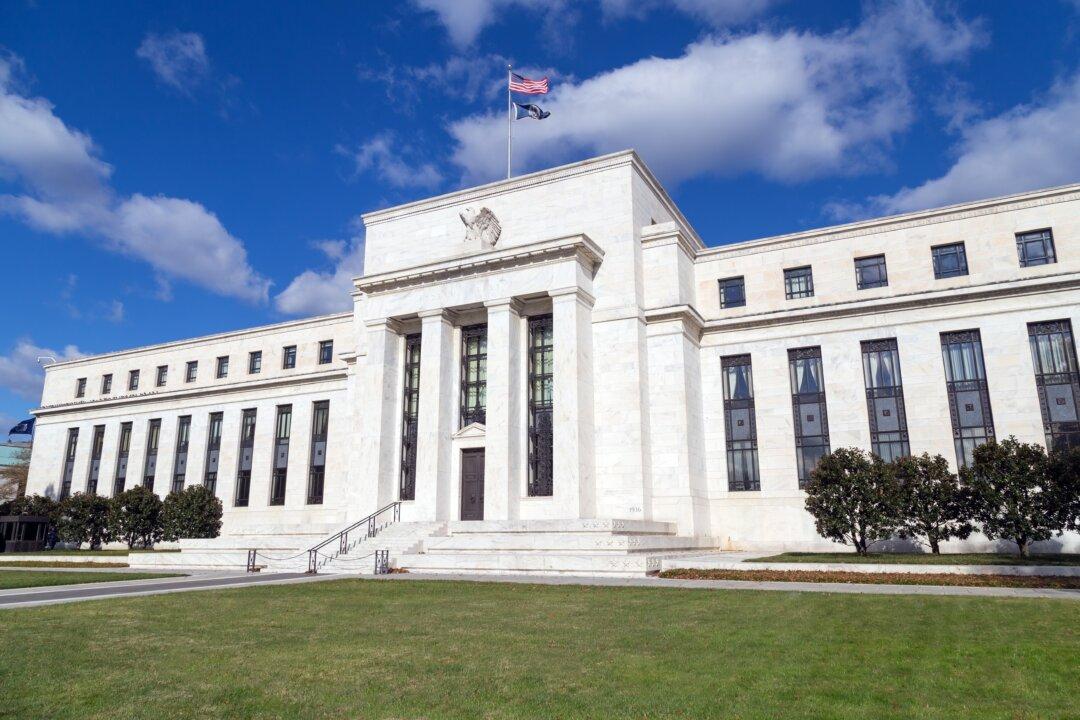Reading the daily economic news is like listening to the video narration of a slow-motion pile-up car wreck on the world’s busiest highway. We know exactly what’s taking place car by car, and we know the damage is great and intensifying in each frame. We aren’t shocked by any of it, but we somehow can’t stop watching and listening.
There was really no great surprise that $6 trillion in congressional spending in 2020–21 created vast debt that was bought by the Fed with newly created funny money, resulting in vast inflation. We knew that lockdowns would destroy supply chains and trading relationships and smash small businesses. We knew that “fixing” all this with higher and higher interest rates would devastate the housing and bond markets.
Anyone with a basic economic understanding can trace out the cause and effects and also anticipate the next stage. It’s not hard. And yet, here’s what’s remarkable: At every stage, every expert associated with the disaster has claimed that it isn’t really happening. That very thing happened just last week with President Joe Biden’s statement on the disastrous Consumer Price Index (CPI) report, which was again worse than all predictions.
But before getting to the CPI, let’s take a look at the Producer Price Index (PPI) that came the day before. As usual, it received very little attention, but the data were even more alarming. These are the prices that producers have to pay for the goods they buy in order to make or distribute other goods and services.
The PPI can serve as an excellent window into crucial signs of business health such as profit margins and long-term viability. Businesses can live for some time with cost cuts and attempts to “pass on” higher prices to consumers but time takes its toll. Eventually, the brick wall called double-entry bookkeeping comes for everyone.
The latest PPI report is grim. It revealed that we aren’t headed in the right direction at all. The PPI for final demand increased by 0.4 percent in September. This is a turnabout from the two previous months, in which final demand prices declined by 0.2 and 0.4 percent. And why did this happen? Two-thirds of the increase is due not to the price of goods but the price of services.
Why does this matter? For a good part of the past year, the blame for higher prices was often attributed not to monetary effects but to broken supply chains. There was some plausibility to the claim, and I was all ears but suspicious. Now that the supply chain disasters are on their way to being fully fixed—two years after they were supposed to fix themselves right away—we’re now seeing the awful truth. Inflation is indeed driven by monetary effects.
Now look at the CPI. It was up month-over-month, breaking the trend of the two previous months. Year-over-year, it’s still very high at 8.2 percent. Again, the focus of the increase is on services first and goods second, particularly food. The decline in gas prices wasn’t enough to tame the beast.
Two months ago, Biden claimed that inflation was “zero” based on the monthly change, and last month, he claimed that it was up by only “an inch.” The September numbers completely refute his crazy claims. Inflation should be calculated year-over-year. So what does he do this month?
“Americans are squeezed by the cost of living: That’s been true for years, and they didn’t need today’s report to tell them that. It’s a key reason I ran for President. ... Today’s report shows some progress in the fight against higher prices, even as we have more work to do. Inflation over the last three months has averaged 2 percent, at an annualized rate. That’s down from 11 percent in the prior quarter.”
That’s why he ran for president? The day that the PPI and CPI switched places, with the former rising faster than the latter, was the day of his inauguration in 2021. The value of the dollar has fallen by 12 cents on the dollar since those days.
![(Data: Federal Reserve Economic Data [FRED], St. Louis Fed; Chart: Jeffrey A. Tucker)](/_next/image?url=https%3A%2F%2Fimg.theepochtimes.com%2Fassets%2Fuploads%2F2022%2F10%2F14%2F1-JAT-2022.10.14-1200x937.png&w=1200&q=75)
And where does Biden come up with this 2 percent idea? Well, the July month-to-month rate was zero percent and August was 0.1 percent, while September was 0.4 percent. Average that out and annualize it (while excluding two full previous quarters of data) and you come close. But this method is essentially meaningless, especially since it tells you nothing about the past or the trends, nor does it tap into any way that inflation is otherwise ever expressed.
It also strikes me as amusing or terrifying that he at least admits that, according to this crazy method of calculation, inflation last quarter was 11 percent! Gee, I don’t recall the White House ever saying this before. Somehow, we slipped into legendary double digits and no one said it. And it happened on Biden’s watch.
“Prices increased 13.5 percent from January 2021 to September 2022, costing the average American household $728 last month alone. Even if prices stop increasing altogether, the inflation that has already occurred will cost the average American household $8,739 over the next 12 months.”
We’re in a strange situation in which the administrative bureaucrats are telling more truth than the elected president. The Bureau of Labor Statistics states plainly, “Over the last 12 months, the all items index increased 8.2 percent.”
I seem to recall some scene out of Orwell very similar to this. Something about how chocolate rations are always going up but still there’s no chocolate. The narrator of “1984” recalls the scenario:
“For the moment he had shut his ears to the remoter noises and was listening to the stuff that streamed out of the telescreen. It appeared that there had even been demonstrations to thank Big Brother for raising the chocolate ration to twenty grams a week. And only yesterday, he reflected, it had been announced that the ration was to be REDUCED to twenty grams a week. Was it possible that they could swallow that, after only twenty-four hours? Yes, they swallowed it.”
OK, that’s depressing, but the point is there.
It appears that the Fed also agrees that there’s a problem with entrenched inflation, based on the contents of the latest minutes. Stockman’s conclusion based on the 1978–82 experience is chilling: This could go on for four years. Yikes.
As for going back to prices before Biden, it will never happen. This is very sad news for many people and rightly so, but it’s just what’s true. We’ve been robbed, and we’ll never get that money back.
Moreover, this is nothing that will be fixed in the November election. It will all still be a major issue (if we aren’t already at war) by 2024, which means that this gigantic pileup will be what the Republicans will likely inherit and be asked to fix. All credit to the brave souls who are willing to take this on. It will require more than a little clean-up.







